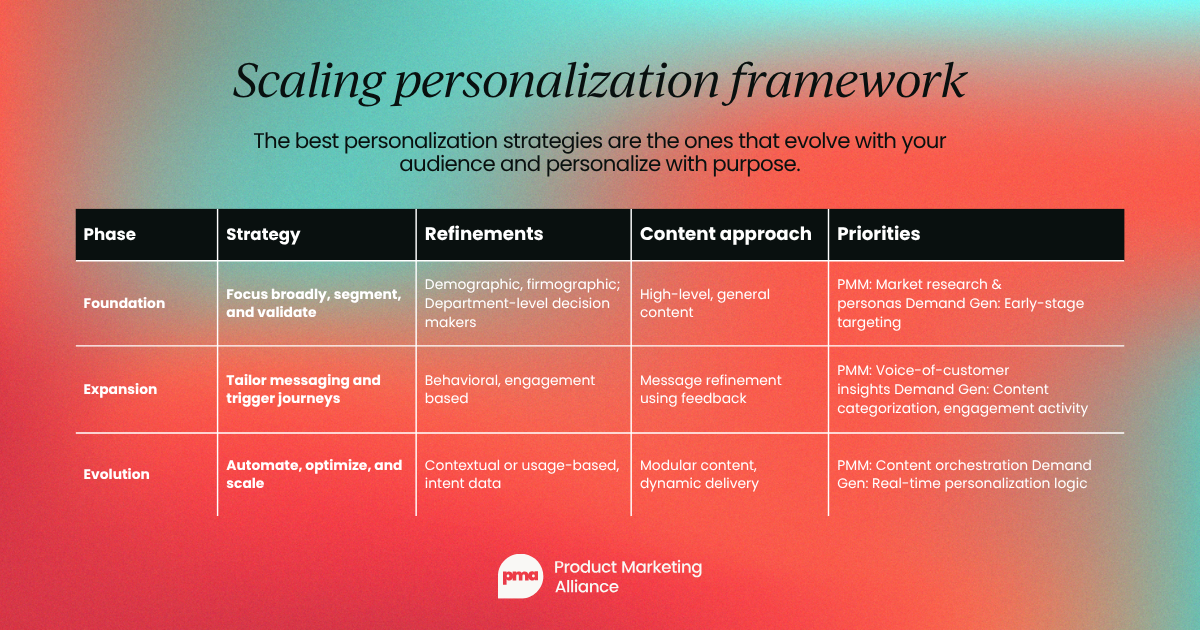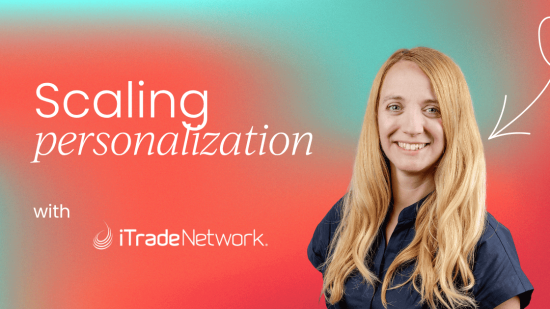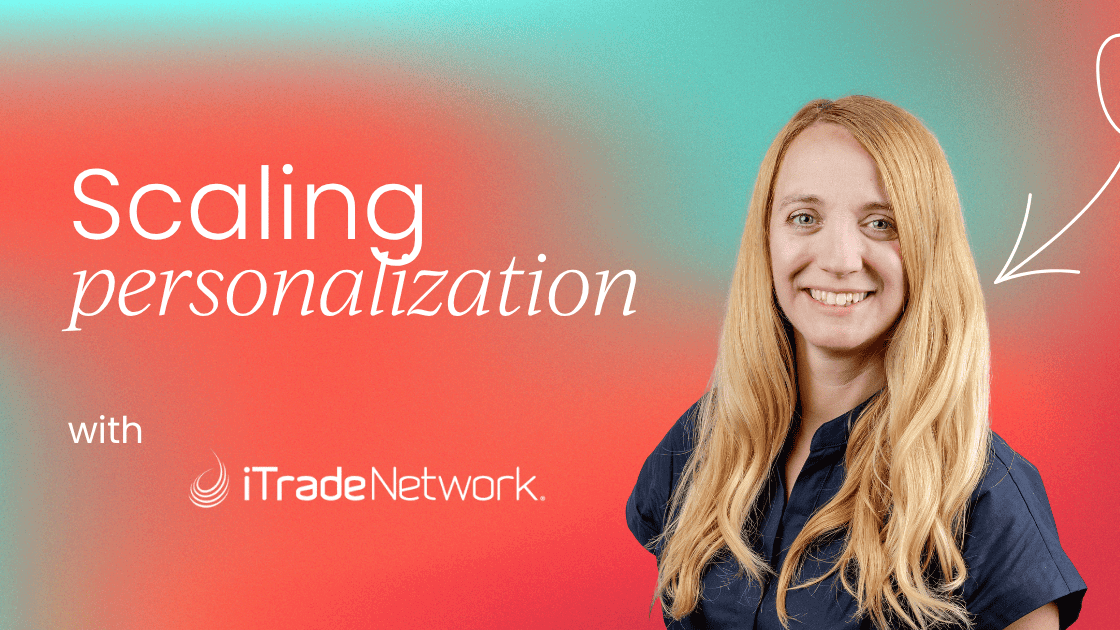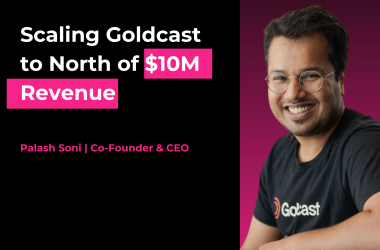Personalization isn’t just a nice-to-have anymore. It’s a cornerstone of modern growth marketing. When done right, it drives efficiency, improves conversion, and unlocks scale across the buyer journey. But getting there takes more than tools and data.
Going from “Hello [First Name]” to dynamic, role-specific messaging across channels? That’s where most teams get stuck. One reason: personalization doesn’t live on a single team.
It’s a joint effort between product marketing and demand generation. PMM defines the narrative, segments, and strategic positioning. Demand gen brings that story to life through campaigns, targeting, and channel execution. Real success depends on tight alignment from message and mechanics.
In this article, we break down what actually works (and what doesn’t) when scaling personalization in growth marketing. You’ll learn how to move through three critical phases: Foundation, Expansion, and Evolution, with practical guidance from both the PMM and demand gen perspectives.
Why personalization at scale fails
Before diving into the how, it’s worth acknowledging what causes most personalization efforts to fall short. Two of the biggest culprits? Trying to get too specific with too little data, and failing to build reusable content that can support scaled personalization.
Teams often aim for 1:1 personalization from the start by targeting individual accounts, creating custom messaging, and layering on automation. But if the data foundation is weak, these efforts backfire. Messaging gets misaligned, campaigns underperform, and what was supposed to feel personalized ends up feeling off.
Another common failure point is content scalability. Without modular assets that can be recombined based on segment or funnel stage, marketing teams quickly hit a bottleneck.
Recreating bespoke content for every audience or campaign is unsustainable and a recipe for burnout. Content needs to be flexible enough to personalize, but structured enough to scale.
Segmentation isn’t one-and-done – it evolves
Segmentation is at the heart of scalable personalization, but it’s not something you get perfect from the start. It should evolve alongside your campaign maturity, data quality, and team alignment.
Here’s how to think about segmentation across the three phases:

The key? Let segmentation grow with you. Don’t overcomplicate early stages, and don’t stay stuck in static lists once your systems and signals mature.
Phase 1: Foundation. Identify, segment, and validate
The strategy
This phase sets the groundwork for scalable audience acquisition. By identifying the right buyer groups and validating messaging early, teams avoid wasted spend and lay the foundation for performance at scale.
Why it’s worth it
To establish clarity and alignment. By defining core buyers and validating early messaging, you avoid wasted spend, reduce campaign misfires, and create a shared foundation across product marketing and demand gen.
What you gain
- Strategic internal alignment on your ideal customer profile
- Messaging that resonates early in the funnel
- Reduced spend on ineffective audiences or assets
Make it happen
This is where your personalization journey begins. But before diving into campaign structure or A/B testing, you need to start with one fundamental question: Who are the decision-makers that actually buy your product?
Personalization doesn’t start with messaging; it starts with identifying the group of buyers you’re trying to reach and truly understanding their motivations, responsibilities, and friction points.
For demand generation, this means defining a high-value audience segment. This is typically based on firmographic traits like industry, company size, or title. Then, developing scalable programs that speak to shared priorities.
Your early efforts might include building persona-based nurture tracks, experimenting with CTA language, and measuring engagement trends across your channels.
On the product marketing side, the emphasis should be on aligning positioning to the buyer’s core goals. Your decision-makers may care about business outcomes and ROI, while influencers or end users are more focused on workflow improvements, usability, or integration ease.
Messaging at this stage should be modular and adaptable to support multiple roles in the same buying group. Avoid jumping too far into micro-targeting or complex decision trees until you’ve validated your broader segmentation and established message-market fit.
For example, a B2B SaaS company launching into the HR tech market might start by segmenting its audience based on company size and department.
They create separate nurture streams for HR managers at startups and HR directors at enterprise firms, tailoring messaging around team efficiency for the managers and compliance readiness for the directors. This broad segmentation gave them just enough structure to begin personalizing without overengineering.
This foundational work isn’t glamorous, but it’s critical. Without clarity on who you’re personalizing for, even the best automation tools won’t deliver meaningful results.
Phase 2: Expansion. Tailor messaging and trigger journeys
The strategy
In the expansion phase, you begin to refine your personalization strategy. Your efforts here will help improve mid-funnel velocity, helping reduce drop-off and increase lead-to-opportunity conversion rates.
Why it’s worth it
To increase funnel efficiency. With behavioral triggers, voice-of-customer insights, and smarter content delivery, your campaigns become more responsive and relevant. This will drive faster lead progression without doubling output.
What you gain
- More relevant mid-funnel journeys that reduce drop-off
- Faster lead velocity
- Messaging that evolves with real-time input
Make it happen
Demand generation leads can now introduce behavioral triggers-such as page visits, webinar sign-ups, or content downloads, to segment audiences based on intent. Campaigns should start to adapt to different channels and optimize timing for each, avoiding the trap of blasting the same message across every platform.
Product marketers should refine messaging to reflect growing buyer awareness. This includes tailoring CTAs, emphasizing different value props depending on the channel, and incorporating voice-of-customer feedback.
But this refinement shouldn’t be guesswork. It should be grounded in a strong feedback loop. Quarterly research and regular feedback cycles should inform what’s working and what needs to evolve.
This might include persona-specific win/loss interviews, competitive analysis, internal sales interviews, or even heatmaps and session replays from web behavior.
Insights from this research should directly inform which benefits are resonating, which objections are surfacing, and how prospects are progressing through the journey.
Coordinating closely with GTM teams ensures your mid-funnel strategy is grounded in what customers actually respond to and creates a closed-loop system where messaging is constantly validated and optimized.
Sharing trends and feedback helps your peers in sales, CS, and demand gen better understand the market and reinforces product marketing’s strategic value across the org.
This is also the phase where your content operations need to become more intentional and efficient. It’s not about producing more. It’s about building smarter systems that scale.
Rather than creating net-new assets for every segment or campaign, PMMs and content teams should focus on building a scalable content architecture. That starts with structuring your CMS so that every asset is tagged by funnel stage, persona, industry, and use case.
This kind of tagging enables content to be deployed efficiently for personalized experiences without rework.
For example, if you know your mid-funnel audience is composed of IT leaders in healthcare, the CMS should allow you to pull a relevant case study, a security feature overview, and a technical one-pager without needing to custom-build a new asset bundle.
Additionally, this structure opens the door to smarter experimentation. You can test variations of proof points, messaging frames, or even media types for different journeys, knowing your base assets are modular and easily swappable.
That level of control helps demand gen teams move faster and frees up PMM resources to focus on high-leverage messaging.
For instance, a cybersecurity platform expanding into new verticals started using behavioral triggers like pricing page visits and content downloads to activate dynamic nurture streams.
By aligning content to each industry’s regulatory concerns, they delivered more relevant mid-funnel messaging without creating new assets from scratch.
Phase 3: Evolution. Automate, optimize, and scale
Strategy
In this phase, personalization shifts from being campaign-led to becoming a continuous growth lever. Dynamic content delivery, AI triggers, and usage-based journeys enable lifecycle expansion from acquisition to retention to upsell.
Why it’s worth it
To unlock sustainable growth. Personalization becomes a system, not a manual task. You support every stage of the lifecycle (acquisition, retention, expansion) without scaling the team workload.
What you gain
- Scalable personalization across the entire lifecycle
- Higher ROI from each piece of content
- A marketing engine that adjusts to buyer behavior in real time
Make it happen
In the evolution phase, personalization becomes more dynamic and adaptive. For demand gen, this means moving from campaign-based execution to system-driven personalization.
Campaigns can now be triggered by real-time product usage, CRM signals, or intent data. AI tools may help automate content selection, while analytics inform constant optimization of evergreen journeys.
On the product marketing side, content becomes more modular and dynamic-built to flex based on role, industry, and behavioral triggers.
Messaging is orchestrated in real time and aligned across the lifecycle, not just within a single campaign. At this level, product marketing must think like an experience designer, ensuring personalization enhances business outcomes.
A successful content strategy at this stage relies on the groundwork laid earlier. Assets should be tagged and categorized by metadata, making it possible to dynamically serve the right asset at the right time.
Content isn’t created for a single campaign; it’s assembled based on context. This approach not only improves relevance but also increases the ROI of every content investment.
Consider a productivity software company that uses real-time product usage data to trigger in-app guides and follow-up email content tailored to a user’s role.
A project manager who hadn’t used the reporting dashboard (an up-charge item with freemium features) would get nudges and tutorials focused on that feature, while an executive would receive summary dashboards and ROI framing. These small shifts helped personalize the experience without overwhelming the content team.
Final thoughts
Ensuring success
This collaboration works best when there are shared rituals and touchpoints. Weekly syncs, shared briefs, Slack channels for fast feedback, and joint retros can help both teams stay aligned and agile. Product marketing brings forward insights from win/loss interviews, persona shifts, and product updates.
Demand gen shares campaign performance, channel-specific behavior, and conversion bottlenecks. This two-way feedback loop ensures that messaging stays relevant, targeting stays sharp, and personalization continues to improve. Treat personalization as a shared system, not a handoff.
Scaling personalization the right way
- Start broad, validate your segments, and build around your core buyers
- Use behavioral data to refine mid-funnel triggers and messaging
- Structure content for modular reuse not to reinvent for every campaign
- Collaborate continuously between PMM and demand gen
- Treat personalization as a lifecycle, not a one-time initiative
Building a growth engine
When done well, personalization isn’t just a marketing tactic; it’s a growth engine. It deepens relevance, shortens sales cycles, and compounds ROI across the customer journey.
Scaling personalization isn’t about doing everything at once. It’s about sequencing your efforts, growing with your data, and aligning across teams. Start broad, test smart, refine continuously.
The best personalization strategies are the ones that evolve with your audience and personalize with purpose.





